Mountain Sports Hub:
Your Gateway to Adventure in the Peaks
The most famous mountain activities
Index
-Discover Mountain Hiking
-Rock Climbing
–Mountain Biking
-Trail Running
Discover Mountain Hiking - What It Is & Why You'll Love It
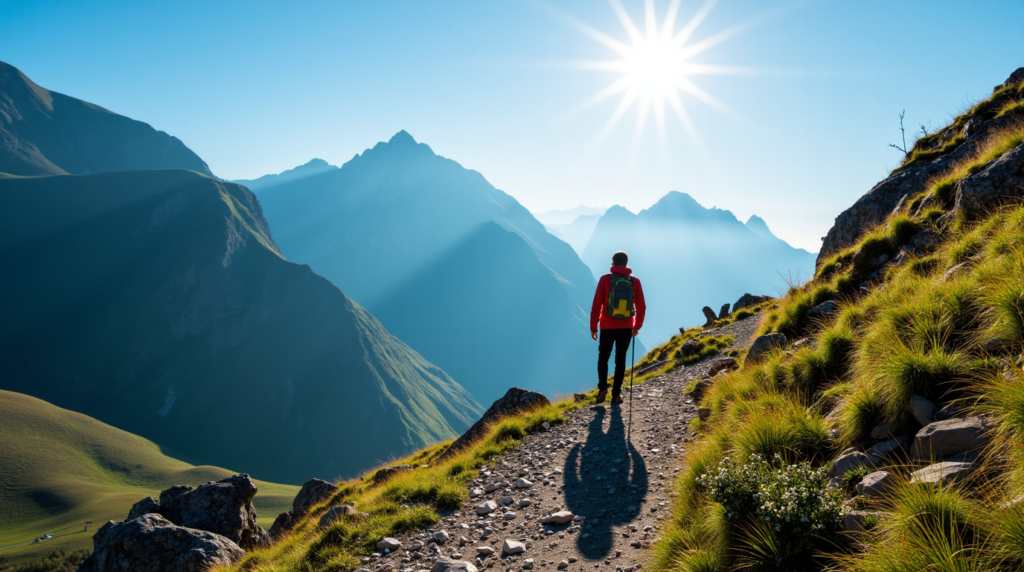
Discover Mountain Hiking - Connect with Nature, Challenge Yourself, and Find Breathtaking Views
Mountain hiking is an immersive journey into nature’s grandeur. More than just walking uphill, it’s about exploring diverse terrains, breathing fresh mountain air, and witnessing stunning vistas unfold with every step. From leisurely strolls to invigorating treks, hiking offers a unique blend of physical activity, mental rejuvenation, and a deep connection with the natural world. Discover why mountain hiking has captivated people for centuries and how you can begin your own adventure.
What is Mountain Hiking? & History Combined Content.
Mountain hiking involves traversing trails in mountainous landscapes, encompassing varied elevations and rugged beauty. It’s a pursuit that ranges from gentle walks to strenuous ascents, appealing to a wide spectrum of fitness levels and interests. The allure of hiking lies in its ability to transport you away from the everyday, offering solitude, adventure, and unparalleled scenic rewards. Historically, while mountain travel existed for practical reasons, recreational hiking gained popularity in the 18th and 19th centuries, fueled by the Romantic movement’s appreciation for wild nature. Figures like Rousseau and Wordsworth inspired a love for mountain landscapes, leading to the development of trails, resorts, and hiking clubs, transforming mountain exploration into a cherished pastime enjoyed globally today.
Your Guide to Getting Started with Mountain Hiking - Gear, Techniques, & Safety
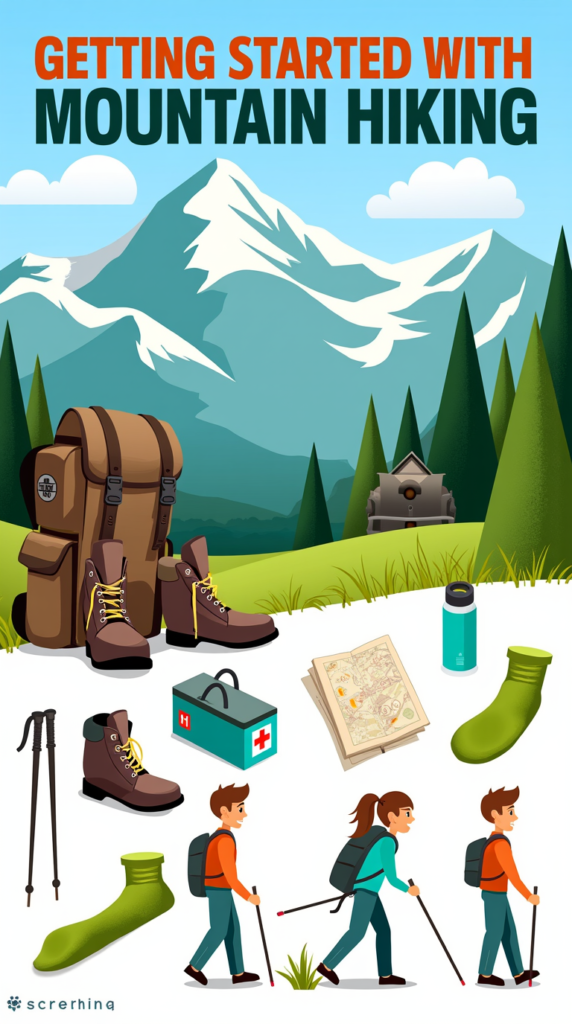
Getting Started
Start Smart: Choose easy, well-marked trails with minimal elevation gain. Begin with shorter hikes (1-2 hours) and gradually increase distance.
Pace Yourself & Stay Hydrated: Hike at a comfortable pace. Carry at least 2-3 liters of water and drink regularly. Pack energy snacks.
Footwear & Layers are Key: Wear comfortable hiking shoes/boots (broken in!) and dress in moisture-wicking layers to adapt to changing weather.
- Basic Etiquette: Stay on trails, pack out trash, respect nature and other hikers.
Essential Gear
Footwear: Hiking shoes or boots, hiking socks
Clothing: Moisture-wicking base layers, insulating mid-layer, waterproof/windproof outer layer, hiking pants/shorts, hat
Backpack & Hydration: Daypack (20-30L), water bottles or hydration reservoir
Navigation & Safety: Map, compass (and knowledge!), basic first-aid kit, headlamp/flashlight, sunscreen, sunglasses
Safety & Best Practices
Weather Aware: Check forecast before going. Be prepared for changes.
Plan & Tell Someone: Choose appropriate trails, inform someone of your route and expected return.
Navigation Skills: Learn basic map and compass skills.
Emergency Preparedness: Carry a first-aid kit, know emergency procedures.
Leave No Trace: Pack out everything, respect the environment.
Explore Mountain Hiking Further
- Find Hiking Trails Near You: https://es.wikiloc.com/
Discover Rock Climbing - Challenge Yourself Vertically and Conquer New Heights
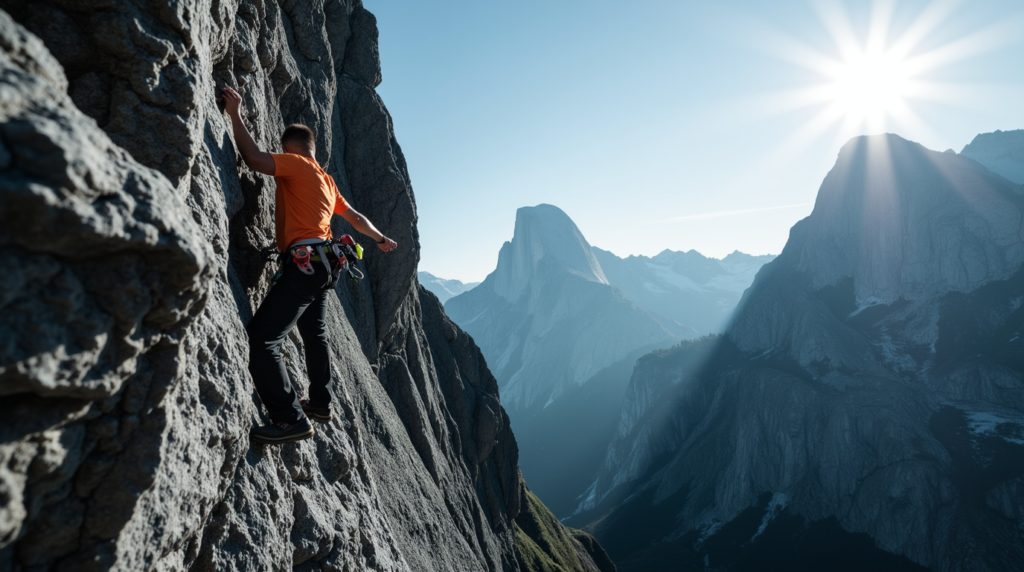
Rock climbing is an exhilarating sport that combines physical and mental prowess, inviting you to test your limits in the vertical realm. More than just scaling rocks, it’s about problem-solving, precision movement, and the unparalleled satisfaction of reaching a summit using your own strength and skill.
From beginner-friendly crags to challenging multi-pitch routes, rock climbing in the mountains offers a unique adventure for those seeking adrenaline, personal growth, and breathtaking views from above. Discover the allure of vertical exploration and how you can begin your climbing journey.
What is Rock Climbing?" & "History" Combined Content
Rock climbing in the mountains involves ascending rock formations using specialized techniques and equipment. Sport climbing, in particular, focuses on pre-placed bolts for safety, allowing climbers to focus on movement and technique. It’s a sport that demands strength, endurance, flexibility, and mental focus, rewarding climbers with stunning views and a profound sense of accomplishment. Historically, while mountaineering and climbing for survival existed for centuries, recreational rock climbing as a sport emerged in the late 19th century, evolving from mountaineering and gymnastics. Early pioneers sought new challenges on rock faces, developing techniques and ethics that shaped modern climbing. Sport climbing, with its emphasis on accessibility and safety through bolted routes, gained popularity in the late 20th century, making the vertical world more approachable and enjoyable for a wider audience.
Your Guide to Getting Started with Rock Climbing - Gear, Techniques, & Safety
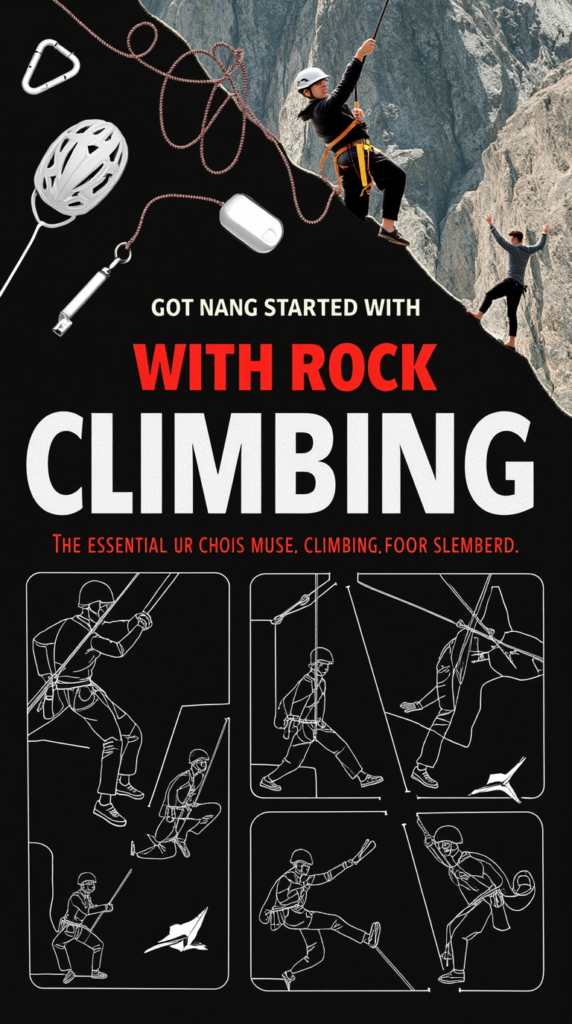
Getting Started
Start Indoors First (Recommended): Begin at an indoor climbing gym to learn basic techniques, get comfortable with heights, and receive instruction in a controlled environment.
Take an Introductory Lesson: Enroll in a beginner climbing class to learn essential skills from qualified instructors, including belaying and basic movement.
Climb with Experienced Partners or Guides: When transitioning outdoors, climb with experienced climbers or hire a guide for your first outdoor experiences.
Choose Beginner-Friendly Crags: Start at well-known climbing areas with routes graded for beginners (look for easier sport climbing routes).
Focus on Technique over Strength: Proper technique is more important than brute strength in climbing. Learn efficient movement, footwork, and body positioning.
Essential Gear
Climbing Shoes: Specialized shoes for grip and precision on rock.
Harness: To connect you to the rope and belay system safely.
Belay Device & Locking Carabiner: For belaying your climbing partner.
Climbing Rope (Dynamic Rope): Specifically designed for climbing falls.
Helmet: Essential for head protection from falling rocks or falls.
Chalk Bag & Chalk: To improve grip and absorb sweat.
Safety & Best Practices
Learn from Qualified Instructors: Proper training is crucial for safe climbing and belaying.
Always Climb with a Partner and Use the Buddy System: Never climb alone. Always have a competent belayer.
Double-Check Everything: Before each climb, double-check your harness, belay device, knots, and your partner’s setup.
Communicate Clearly with Your Partner: Use standard climbing commands for clear communication.
Understand Route Grades and Climb Within Your Ability: Start with easier routes and gradually progress.
Be Aware of Rockfall and Environmental Hazards: Assess rock quality, weather conditions, and potential hazards at the crag.
Explore Rock Climbing Further
- Find Climbing Gyms & Crags Near You: https://iloverockclimbing.com/
Discover Mountain Biking - What It Is & Why You'll Love It
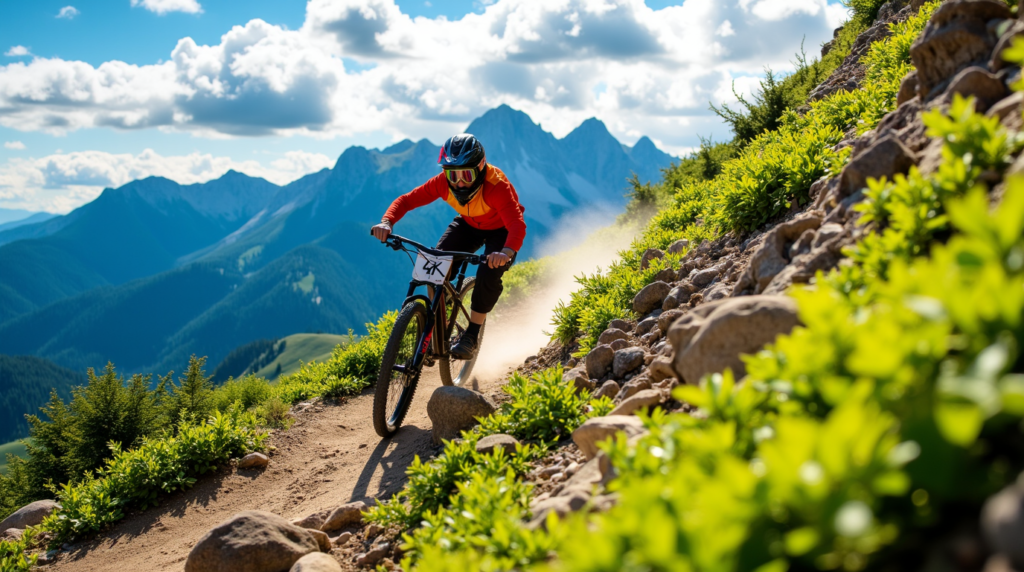
Discover Mountain Biking - Explore the Mountains with Speed and Thrills
Mountain biking is a dynamic and exhilarating way to experience mountain landscapes. More than just cycling off-road, it’s about navigating varied terrain, conquering climbs, and enjoying thrilling descents while surrounded by nature’s beauty. From cross-country trails to adrenaline-pumping downhill runs, mountain biking offers a diverse range of experiences for fitness enthusiasts, adventure seekers, and nature lovers alike. Discover the freedom of two wheels and how you can start exploring mountain trails.
What is Mountain Biking? & History Combined Content
Mountain biking involves riding bicycles on off-road trails, typically in mountainous or hilly terrain. Cross-country mountain biking emphasizes endurance and fitness, focusing on riding varied terrain over longer distances. It’s a sport that combines cardiovascular exercise, technical skill, and a deep connection with the outdoors, rewarding riders with stunning views and a sense of adventure. Historically, while off-road cycling existed in various forms, mountain biking as a distinct sport emerged in California in the 1970s. Enthusiasts modified bikes to handle rough terrain, creating the first mountain bikes. The sport rapidly grew in popularity in the 1980s and 90s, with advancements in bike technology and the development of dedicated trails and mountain bike parks worldwide, evolving into a diverse discipline encompassing various riding styles and levels.
Your Guide to Getting Started with Mountain Biking - Gear, Techniques, & Safety
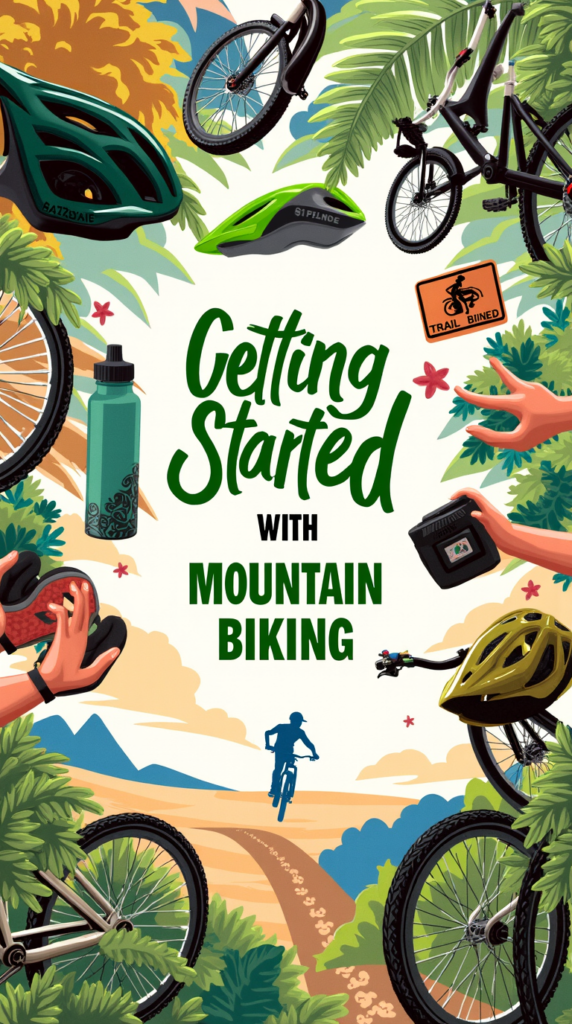
Getting Started
Start with Beginner Trails: Choose well-maintained, smooth trails with minimal obstacles and gentle gradients. Look for «green» or beginner-rated trails at local trail networks or bike parks.
Take a Beginner Lesson or Clinic: Consider taking a beginner mountain bike lesson to learn basic skills from a qualified instructor, including bike handling, braking, and body position.
Ride with Experienced Riders: Learn from experienced mountain bikers. Riding with friends or joining a local cycling group can provide valuable guidance and support.
Practice Basic Skills in a Safe Area: Before hitting trails, practice basic skills like braking, shifting gears, cornering, and riding over small obstacles in a parking lot or grassy area.
Start Slow and Gradually Progress: Begin at a comfortable pace and gradually increase speed and trail difficulty as your skills and confidence improve.
Essential Gear
Mountain Bike (Hardtail or Full Suspension): Choose a mountain bike appropriate for cross-country riding with front suspension (hardtail) or full suspension for more challenging trails.
Helmet (Mountain Bike Helmet): Essential for head protection in case of falls.
Cycling Gloves: Improve grip and protect hands.
Cycling Shoes (Clipless or Flat Pedal Shoes): Provide better power transfer and control.
Cycling Shorts or Pants: Padded shorts for comfort on longer rides.
Water Bottle or Hydration Pack: Carry water for hydration.
Safety & Best Practices
Wear a Helmet – Always! Helmet use is non-negotiable for mountain biking safety.
Check Your Bike Before Each Ride: Inspect tires, brakes, chain, and other components to ensure your bike is in good working order.
Be Aware of Your Surroundings: Pay attention to the trail ahead, other trail users, and potential hazards like rocks, roots, and drop-offs.
Control Your Speed: Ride within your ability and control your speed, especially on descents and technical sections.
Use Brakes Properly: Learn to use front and rear brakes effectively and modulate braking to maintain control.
Carry Basic Repair Tools & Spares: Learn basic bike maintenance and carry a multi-tool, spare tube, pump, and tire levers for minor repairs on the trail.
Explore Mountain Hiking Further
- Find Mountain Bike Trails Near You: https://www.trailforks.com/
Trail Running: Your Complete Guide to Running in the Mountains
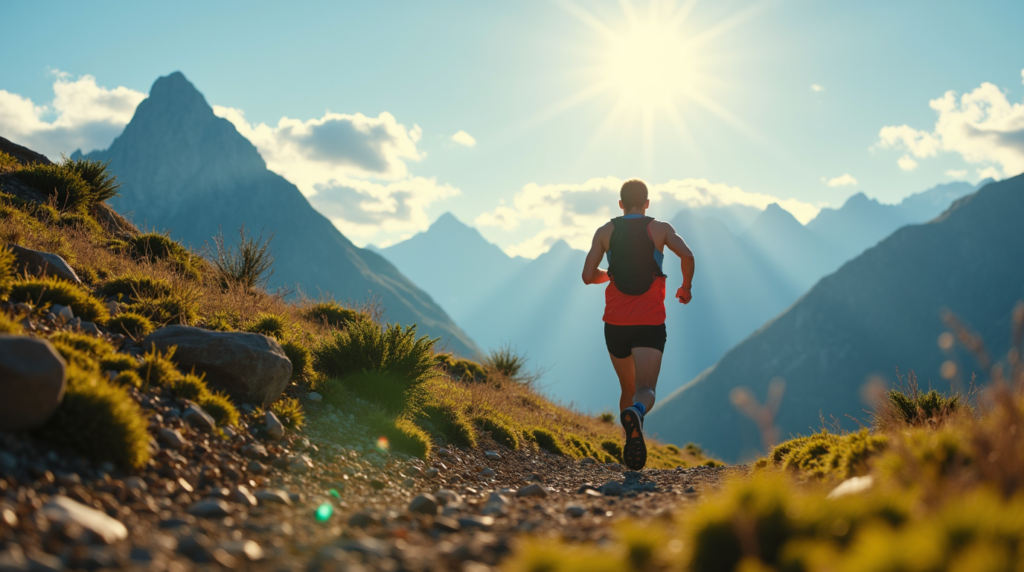
Discover Trail Running - Combine Fitness with Mountain Scenery
Trail running takes the joy of running off the road and onto mountain paths, offering a dynamic and challenging way to experience the outdoors. More than just running in nature, it’s about navigating varied terrain, pushing your physical limits, and immersing yourself in breathtaking mountain landscapes. From gentle forest trails to steep alpine ascents, trail running provides a unique blend of fitness, adventure, and a deep connection with the natural environment. Discover the exhilarating freedom of trail running and how you can begin your mountain running journey.
What is Trail Running? & History Combined Content
Trail running is the sport of running and hiking on unpaved trails, often in natural settings like mountains, forests, and deserts. It differs from road running by involving varied terrain, including hills, rocks, roots, and uneven surfaces, requiring greater agility and adaptability. Trail running emphasizes both cardiovascular fitness and technical running skills, rewarding runners with stunning scenery and a sense of freedom and exploration. While people have run on trails for centuries, trail running as a recognized sport emerged in the late 20th century, growing out of fell running in the UK and similar mountain running traditions. The rise of ultramarathons and the increasing popularity of outdoor recreation further fueled the growth of trail running, transforming it into a global sport embraced by runners of all abilities seeking adventure and connection with nature.
Your Guide to Getting Started with Trail Running - Gear, Techniques, & Safety
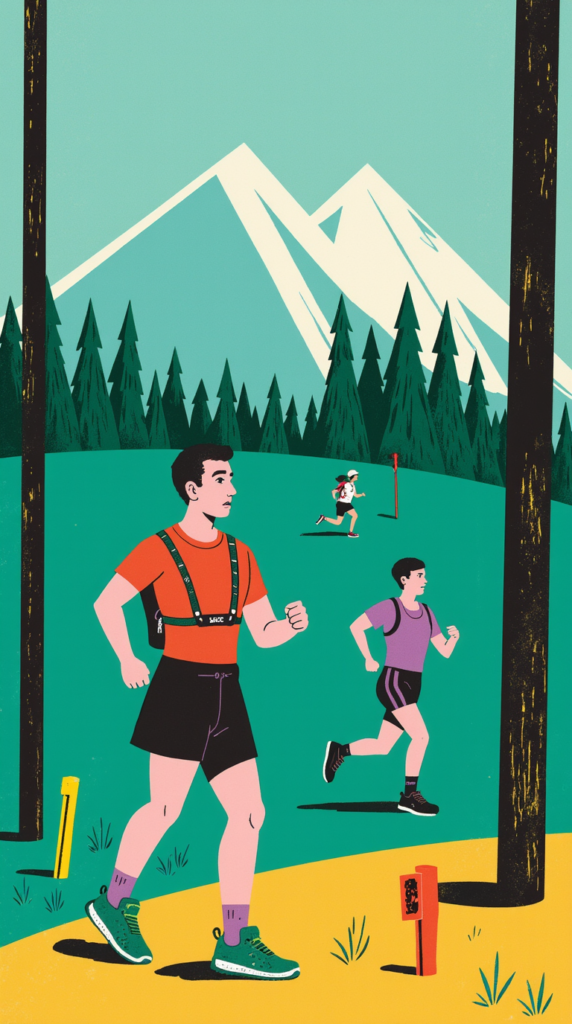
Getting Started
Start with Hiking and Power Hiking: Transition gradually to running by incorporating hiking breaks and power hiking uphill sections.
Choose Beginner-Friendly Trails: Select smooth, less technical trails with gentle elevation changes. Avoid overly steep or rocky trails initially.
Focus on Effort, Not Pace: Trail running pace will be slower than road running due to terrain. Focus on maintaining a comfortable effort level and breathing.
Walk Uphill: Don’t be afraid to walk uphill sections, especially when starting out. Power hiking is an efficient way to ascend trails.
Shorten Your Stride: Use a shorter, quicker stride on trails for better balance and agility over uneven terrain.
Essential Gear
Trail Running Shoes: Provide better traction, support, and protection for off-road terrain compared to road running shoes.
Moisture-Wicking Running Apparel: Breathable and quick-drying clothing for comfort.
Hydration Pack or Handheld Water Bottle: Carry water, especially for longer runs.
Energy Gels or Snacks: Fuel for longer runs.
Small Backpack or Running Vest: For carrying water, snacks, phone, and emergency items.
Safety & Best Practices
Be Aware of Uneven Terrain: Watch your footing and pay attention to rocks, roots, and trail hazards.
Look Ahead and Plan Your Steps: Scan the trail a few steps ahead to anticipate obstacles and plan your foot placement.
Adjust Your Pace for Terrain: Slow down on technical sections, uphills, and downhills.
Run with a Buddy (Recommended): Especially on remote trails, running with a partner is safer.
Carry a Phone and Identification: For emergencies, but don’t rely solely on phone service in mountain areas.
Let Someone Know Your Route and Expected Return Time: Inform someone of your plans before you go.
Explore Mountain Hiking Further
- Find Trail Running Routes Near You: https://runkeeper.com/